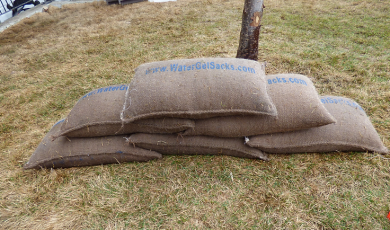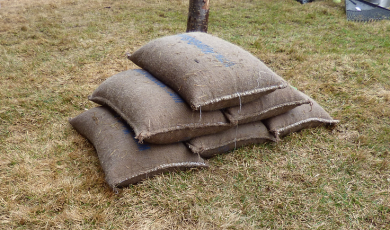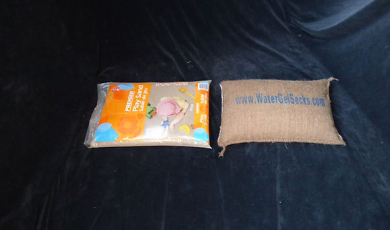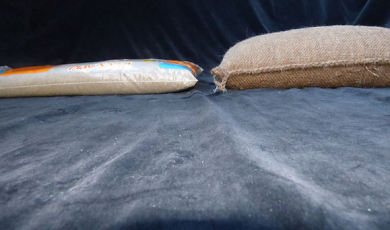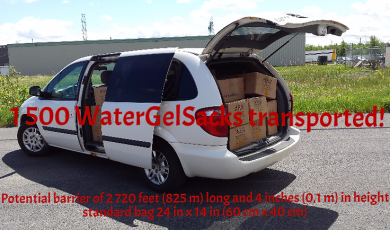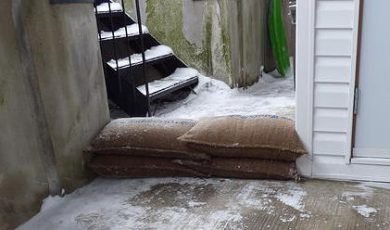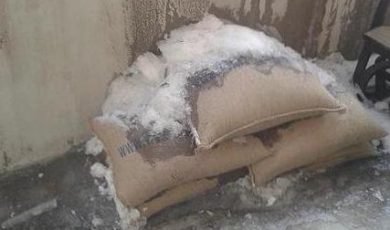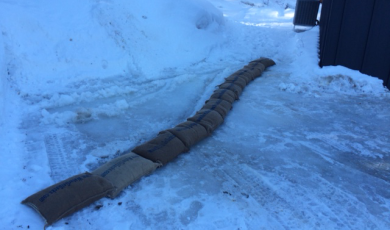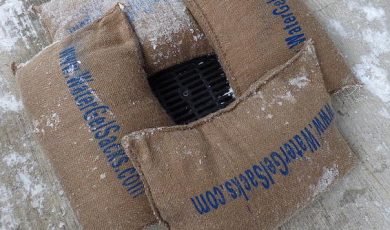How to use WaterGelSacks™ Storage and usage instructions for WaterGelSacks™:
Before Use:
Store WaterGelSacks™ in a dry indoor area in its original plastic bag and cardboard box packaging, away from air, moisture, sunlight, and heat. With proper storage, extreme weather conditions—such as high desert heat or freezing temperatures—will not impact the product’s longevity.
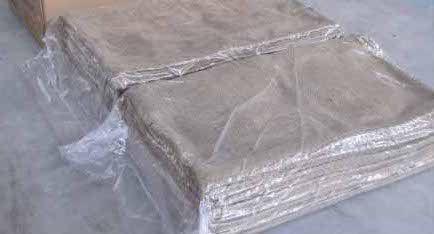
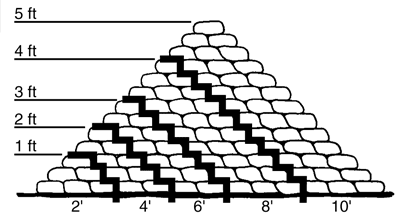
When ready to use:
- Bring the WaterGelSacks™ to the site, removing them from the cardboard box and plastic packaging.
- Submerge the sack in nearby water, floodwater if needed, or use a hose for inflation.
- The bag will absorb water and expand within 3-4 minutes, becoming fully saturated and ready for use.
- Place WaterGelSacks™ as needed.
When ready to use:
- Bring the WaterGelSacks™ to the site, removing them from the cardboard box and plastic packaging.
- Submerge the sack in nearby water, floodwater if needed, or use a hose for inflation.
- The bag will absorb water and expand within 3-4 minutes, becoming fully saturated and ready for use.
- Place WaterGelSacks™ as needed.

Application:
Use WaterGelSacks™ as a flood defense by arranging them in a barrier formation alongside plastic sheeting.
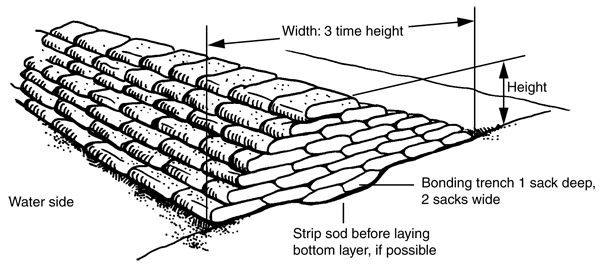
Post-inflation storage:
Once inflated, WaterGelSacks™ remain effective for quiet few months (depending on environmental conditions). If they are stored for later use, place them in a dry, protected indoor area, such as a garage, covered with plastic sheeting. WaterGelSacks™ will not leak; however, if some water evaporates over time, simply re-soak to restore the weight and effectiveness as needed. This rehydration process can be repeated many times, depending on temperature and usage conditions.
Disposal:
After use, dispose of WaterGelSacks™ in authorized landfills, or cut open the bag to remove the SAP (superabsorbent polymer) inside. The SAP can be safely placed around plants and trees but should not be introduced into drainage systems. Both the jute and cotton bags and the non-woven, can be discarded as regular waste. All materials are environmentally safe and non-toxic.
Note: If the sacks were filled with contaminated water, follow local regulations for early and appropriate disposal.
Post-inflation storage:
Once inflated, WaterGelSacks™ remain effective for quiet few months (depending on environmental conditions). If they are stored for later use, place them in a dry, protected indoor area, such as a garage, covered with plastic sheeting. WaterGelSacks™ will not leak; however, if some water evaporates over time, simply re-soak to restore the weight and effectiveness as needed. This rehydration process can be repeated many times, depending on temperature and usage conditions.
Disposal:
After use, dispose of WaterGelSacks™ in authorized landfills, or cut open the bag to remove the SAP (superabsorbent polymer) inside. The SAP can be safely placed around plants and trees but should not be introduced into drainage systems. Both the jute and cotton bags and the non-woven, can be discarded as regular waste. All materials are environmentally safe and non-toxic.
Note: If the sacks were filled with contaminated water, follow local regulations for early and appropriate disposal.
